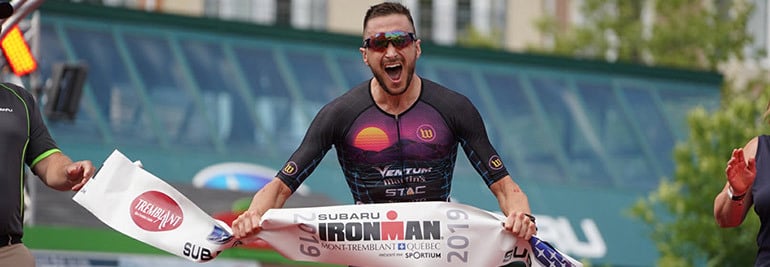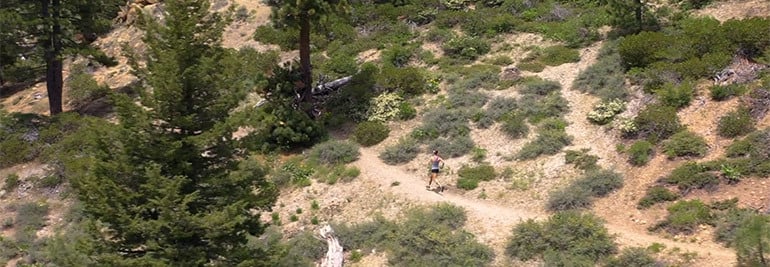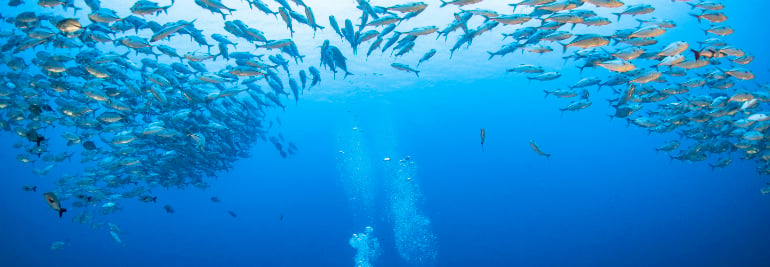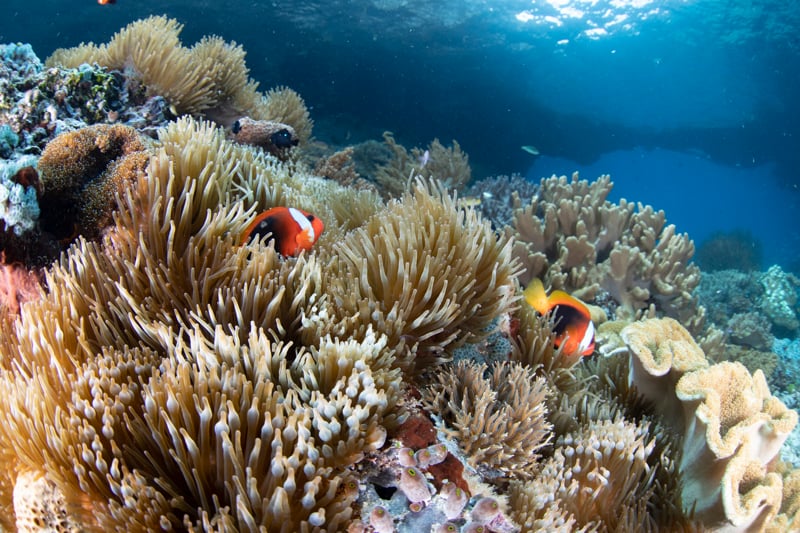

Suunto-blogg

Road to Kona: Cody Beals' clear race strategy
"Many athletes seem to make impulsive decisions, sometimes abandoning carefully crafted race plans,” says pro triathlete Cody Beals as he prepares for the IRONMAN World Championships in Kona.
Cody Beals didn’t fully commit himself to the sport of triathlon until after he completed his degree in Physics, but he was never a stranger to endurance sports. “My parents introduced me to endurance sports almost as soon as I could walk. I got my first taste of competition as a swimmer and later picked up cycling and running as a teenager.”
“Endurance sports, like my academics, rewarded consistent, deliberate practice even more than natural ability.”
Three full-distance pro Ironman races and three wins! (Image ©Kevin Mackinnon)
From his first local “Try-a-Tri” in 2006 Cody Beals steadily produced promising results. He fully committed himself to the sport in 2012 and in 2014 took his elite card making this his sixth season as a professional triathlete. Currently Cody has won three out of three of his full-distance IRONMAN races, recently winning IRONMAN Mont Tremblant in August for the second time.
Heading into his first appearance at IRONMAN World Championships in Kona, Cody is confident in his preparation. After defending his title at IRONMAN Mont Tremblant, he plans to continue the same preparation of prioritizing sleep, taking recovery days, and training efficiently with an emphasis on quality over quantity.
However, he is not going into the race naively believing it will be like any other race. “The one thing that I don’t have a good grasp on are the dynamics of a World Championship race. World class athletes, who are otherwise disciplined and rational racers, will behave erratically on the Queen K. Many athletes seem to make impulsive decisions, sometimes abandoning carefully crafted race plans in favor of gambling for the podium. The race plays out in a manner unlike any other. It’s the race dynamics, not the place, that intrigue and mystify me the most.”
Although he is aware of the athletes who will also be racing at Kona, Cody makes an effort to not follow his competition. This allows him to stay focused on his own process and not second-guess his decisions.
Cody on his way to a win at Ironman Mont Tremblant in August. (Image © Talbot Cox)
Cody’s average day of training can take all day. From a late morning swim, to an afternoon run, ending the day with an evening ride. When you add in recovery time, and some desk work and that’s a full day! But he explains his training regimen should not be the standard for those looking to try a triathlon. First timers looking to get into triathlons shouldn’t be intimidated or overwhelmed by the more experienced athletes. The triathlon community is inclusive and welcoming. At the end of the day, Cody says, that “the experience of an absolute beginner and a veteran pro out on the race course have far more in common than different.”
Last but not least it seems that Cody’s secret weapon is his tortoiseshell cat. He says that adopting her from the Humane Society has been nothing short of life changing and he regrets not doing it sooner. “She doesn't care how my last race or training session went. She's just there to give me unconditional affection and make me laugh every day. I'm convinced that cat cuddles are my not-so-secret weapon for recovery!”
READ ALSO:
Road to Kona: 5 tips to train effectively as a couple

Fuelling the engine: 6 principles of nutrition for athletes
When she's not in the mountains, you can find Emelie Forsberg in her garden or preparing delicious meals. © Matti Bernitz
How and what we eat is personal to each one of us. Some of us feel better and more energised by certain foods, while others feel quite differently. Regardless of our personal view, one thing we all have in common is that eating well is essential for top performance.
In our recent article series “Fuelling the engine” we heard from eight athletes and trainers about how they stay fuelled (see the end for the article list). What’s more interesting than their differences, is what they have in common. We’ve combed through and put together six basic principles of nutrition for athletes.
Find your rhythm
Suunto HQ is lucky to have in-house personal trainer and athlete Matias Anthoni walking around the office. He offers training and nutrition advice to whoever is interested. He says improving how often you eat can improve what you eat. Skipping meals is a no-no for dedicated athletes because it causes energy crashes and bad dietary decisions, which result in poor performance. He advises to get into a rhythm of having a healthy meal every three hours.
Get organized
To eat six or more well balanced meals a day demands forward planning. It’s pretty hard, if not impossible, to maintain this if you’re operating on a day-to-day basis. Ryan Sandes, Emelie Forsberg, Mel Hauschildt and Lucy Bartholomew all emphasised the importance of being well organised and planning ahead. They sometimes make extra portions of meals at the beginning of the week to have later in the week when they know they will be busy. Being organised means making sure there are plenty of easy, go-to meal ingredients available, too.
Balanced meals
There are a number of different aspects to having a balanced diet. Ultracycling man Omar di Felice sees it as maintaining a proper balance of carbohydrates, protein and fat, with fatty food being essential for his epic extreme rides above the Arctic Circle every winter. This balance of carbohydrates, protein and fat is what nutrition expert Dr. Rick Kattouf II also drills into his clients. He believes every meal – for dedicated athletes in training – should include this ratio: 50 to 60 % carbohydrates, 15 to 25 % protein, and 15 to 25 % fat. Balance also means eating a variety of foods to make sure you are taking in enough minerals and vitamins. Ski mountaineer Greg Hill tries to have a balance of colors in his meals.
Fresh is best
One thing that came through loud and clear from all our athletes and experts is the importance of eating fresh foods. For Emelie Forsberg and Lucy Bartholomew this means preferably straight out of the earth. As an avid gardener and farmer, Emelie grows and harvests much of what she eats. Lucy, ski mountaineer Greg Hill, Mel and Ryan all try to avoid eating packaged foods, instead choosing foods that are as close to the source of production as possible.
Whole is the goal
Should go without saying: avoid processed food and food with refined sugar. Instead, all our athletes opt for whole foods. Ryan Sandes questioned the idea that recovery shakes could ever replace the nutritional value of whole food. Don't take shortcuts; take the time to eat well. It’s self kindness.
Enjoy yourself
Emelie, Ryan and Greg all said they don’t get uptight about food. Emelie has a relaxed and intuitive approach to food, and Ryan and Greg are happy to allow themselves to enjoy a pizza or a burger each week. Greg cautions not to try to be perfect; aim to make the bulk of what you eat fresh and healthy. “It’s important to enjoy life as well,” Ryan says.
Click below to read articles in our Fuelling the Engine series:
Fuelling the engine: talking nutrition with Lucy Bartholomew
Fuelling the engine: talking nutrition with Emelie Forsberg
Fuelling the engine: a commonsense approach to nutrition
Fuelling the engine: talking nutrition with Ryan Sandes
Fuelling the engine: talking nutrition with Ultracycling Man
Fuelling the engine: talking nutrition with Mel Hauschildt
D.I.E.T (disaster imminent every time), and three unchanging principles of nutrition for athletes
Fuelling the engine: talking nutrition with Greg Hill
Lead images:
Photo by ja ma on Unsplash
© Craig Kolesky / Red Bull Content Pool

New life through running
Needless to say, Liz is no stranger to hard work and dedication. After pacing a friend during an ultramarathon, she decided it was something she would like to try. She has since embraced the sport of ultrarunning, and since 2015 has powered through three 100-mile ultramarathons. Her short time in ultrarunning has already changed her life and taught her lifelong lessons.
“I'm realizing that the most I learn after each long-distance race is how to be a kinder and more flexible person. I bring too much of my Type A personality to these events and have to keep improving my ability to compromise, goal-set on the fly, and most of all, smile,” says Liz.
Watch the video below to see how running has changed Liz’s life.

Changing the World from Behind the Camera
Steve Woods has amassed stacks of content illustrating his experiences underwater including thousands of photos that represent the true devastation of the human impact on our natural world. Through his photographic artistry he has successfully utilized his talent to tell the world this sad story that everything is not OK and we need to initiate change.
The Driving Force
Steve’s dedicated parents drove for hours across the UK so that they would be able to make their son’s dreams come true, they would take him to any shark exhibition they could locate until one day, there was to be a real shark on display. He was on the edge of his seat, apprehensive, and excited about what he was going to see. On arrival Steve rushed to find the shark only to be confronted with a papier maché model instead.
Unperturbed by the severe disappointment, the young wildlife enthusiast did not give up his quest to see a real shark.
© Steve Woods Photography
Steve began diving at nine years old and with his family and qualified alongside his parents and two sisters in Turkey when he was twelve.
“When I was a kid I used to watch old VHS documentaries, I had three or four of them that I collected over the years, relics from birthday and Christmas celebrations gone by I would view them over and over until they tapes wore too thin to play. At any chance I could I would beg my parents to take me down the local garden centre that had an aquarium inside to see the ragged tooth and the grey nurse sharks. I would sit there for hours just watching it slowly doing laps around and around the tank,” reminisces Steve.
Fifteen years later he saw the shark he had been dreaming of.
The Journey
Steve spent his early career working in journalism in the UK driven by a deep seated desire to change the world and make it a better place. Steve grasps the importance of illustrating the issues we face as a community and wants to reach people who perhaps have a lesser understanding of the impact of their everyday actions. During his journalist years he committed a lot of time uncovering the detrimental aspects of fish farming and fisheries and spent time underwater to see how the problems could be managed and minimised.
The 2008 shark experience Steve had in Indonesia stayed with him and he soon found himself burning his savings on new camera equipment, securing a one way ticket to Indonesia and leaving the world of British journalism far behind for a life of adventure and to use his photography skills to help protect the oceans.
Once he arrived in Lombok he took up work with local dive centres and photographed guests on their diving adventures so they could take home cool memories from their dive trips. The experience was valuable as it gave him a deeper understanding of how to capture light in water and the technicalities of shooting stills under the sea in order to capture the powerful and clear images he does today.
Soon he found himself involved in setting up a shark conservation foundation alongside a team of local groups and conservation projects called the Gili Shark Foundation.
© Steve Woods Photography
Gili Shark Foundation
“We began photographing sharks, we thought they were all the same as did the community. When we started identifying them we noticed there were many more than we initially thought there were. Gili Shark Foundation was a great way to get the whole island working together. Everyone was involved in shark counts, events and data collecting.” Steve had achieved what he set out to do by using his passion to highlight nature and the human impact.
After a successful time in the Gili islands he moved to Raja Ampat to continue working in conservation. Plastic is prevalent in remote areas, as well as most other environments and Raja is experiencing the same issues. Steve worked with the local communities to show them how to start and maintain effective conservation efforts in areas that have potential. The key to successful conservation projects is longevity with a clear plan for the future.
“The only way to change the human habits it by educating an involving the local communities. If you go in and rule over a population then it is an imperialistic act. When we came to Raja, the locals were well aware the plastic waste was increasing and that fish stocks were decreasing. We worked together to come up with a plan that would enhance their lives and make them more money.” Steve says.
Looking back on his career so far, he talks of many memorable moments working underwater including humpback whale, shark, manta encounters but he considers the smaller experiences that really stick with you as a photographer and as a human.
“Originally when we set up the shark foundation we were rescuing sharks from fisherman in Bali and then we got permission from the government to release them into a fishing projected area in Lombok. First time I had ever done anything like this. We completed research, spoke to people and made plans. Collected the animals and sent them off on a fast boat to be released into water. Who knows if they were going to survive, but we had given them a chance.” Steve says.
Three months later they identified that same shark by the dot pattern in the skin. Steve acknowledges this is a small achievement while 200-400 million sharks slaughtered every year, but this moment struck a chord and the feeling has stayed with him.
More and more he uses his photography working alongside marine conservationists to support their work and he hopes to grow this reach and increase the impact.
© Steve Woods Photography
The Future
“Visual language is so important nowadays, if people know they can change their minds.” Ask Steve how he will change the world in the future, he will tell you “one step at a time”.
© Steve Woods Photography
Suunto took five lucky competition winners of the trip to Raja Ampat on the Suunto D5 photo shoot, they were dive instructor Rosie Sheb'a from Australia, student Niko Lekhraj from Singapore, outdoor guide Anders Vestergård from Denmark, designer Xiaomo "Momo" Wang from China and nature activist Lilian Ellevog from Norway. See them diving in Suunto D5 images and videos.

Fuelling the engine: talking nutrition with Greg Hill
Record-breaking ski mountaineer, adventurer and Suunto ambassador Greg Hill has always been a foodie. Eating well is about enjoyment, which also serves his nutritional needs. He approaches it in that order, not vice versa.
“Nutrition has always been important but more so because I really enjoy eating great food,” he explains. “Yet I also understand that the fuel we put in our bodies determines how well it runs. Much like an engine, if you put bad gas into it, it will run poorly.”
Photo by Angela Percival/ Arcteryx
Fresh colors
Greg tries to eat fresh vegetables with a variety of colors, which he says indicates nutritional richness. Whenever possible, he also cooks with food from local sources. “I do grow a small garden every year, with tomatoes, potatoes, garlic, carrots, broccoli, beets, just your basics,” he says. “It’s so nice to go and grab them directly from my yard.”
Week day diet
Greg and his family are following the “week day vegetarian diet”, meaning they only meat on the weekends. This contributes to personal health and reduces their impact on the planet. “The personal health side is pretty clear, there are so many articles about reducing red meat in your diet and the benefits involved, from a reduced potential for cancer to lower cholesterol, to living longer,” he says.
“One of the simplest way to decrease my family’s carbon footprint was to decrease our meat intake; livestock farming is responsible for 20-50 per cent of the greenhouse gases, so this was an easy way to become better earth dwellers. If you ever look into livestock it is amazing the deforestation involved, the extreme water usage and over un-sustainability of it.
Photo by Angela Percival/ Arcteryx
Healthy balance
While the Hills like to keep it fresh, they also allow themselves to indulge in a fast food meal once a week, like ordering a pizza on Friday movie night. Perfection is not the goal, Greg says, just as long as the the bulk of their diet is fresh, healthy food.
“Like every family we have certain meals that are staples, enchiladas, lasagna, salad rolls, pad thai, pizza on friday nights, and my favourite – the glory bowl,” he says.
Tofu glory bowl
In the bowl
2 cups cooked brown rice1/2 cup grated beetroot1/2 cup grated carrots1/2 cups almonds, toasted1/2 cups spinach leaves1 cup tofu, cubed
Dressing
1/4 cup tahini1/4 cup apple cider vinegar1/2 cup nutritional yeast flakes2 gloves garlic3 tablespoons tamari1 tablespoon maple syrup1/4 cup olive oil1/4 cup water
Instructions
Prepare the brown rice and set aside.Fry tofu cubes in a pan.Add dressing ingredients into a blender to prepare the dressing. Add oil in a steady stream. Taste, and thin with water if required.Assemble the bowls by placing cooked brown rice into two bowls, top with beets, carrots, spinach leaves, almonds and fried tofu cubes.Drizzle bowls with dressing.
Lead image: Photo by Fancycrave on Unsplash.
Click below to read articles in our Fuelling the Engine series:
Fuelling the engine: talking nutrition with Lucy Bartholomew
Fuelling the engine: talking nutrition with Emelie Forsberg
Fuelling the engine: a commonsense approach to nutrition
Fuelling the engine: talking nutrition with Ryan Sandes
Fuelling the engine: talking nutrition with Ultracycling Man
Fuelling the engine: talking nutrition with Mel Hauschildt
D.I.E.T (disaster imminent every time), and three unchanging principles of nutrition for athletes

Max Ammer, Raja Ampat and the richest reefs in the world
Janne Kasperi Suhonen ©
Last year Suunto took a group of competition winners out to Indonesia for the Suunto D5 photo shoot to produce inspirational content. We had never explored these waters before and we soon saw the fruits of hard work. It was to say, nothing less than inspiring and the story behind this special location is just as wonderful.
Steve Woods Photography ©
The Best Diving in the World?
A young fisherman stood at the edge of the water on West Papua next to his canoe. Inside the canoe there were two turtles that he had caught on his morning excursion. Max Ammer walked past the fisherman by the canoe and immediately his interests were sparked. After a brief chat and small negotiation, the pair agreed a fair price for the sale of the turtles.
Once the money was exchanged, Max sprang into action and suddenly flipped the first turtle over the side of the canoe to which the fisherman promptly jumped in the shallow water after it. In the splash and confusion Max then took his chance flipped the other turtle off the other side of the canoe back into the ocean and watched it happily swim away. With the fisherman staring in awe at what was in his understanding a ludicrous occurrence, Max simply told the fisherman, “I like turtles”.
That same fisherman was soon to become the first dive guide at the five-star eco resort run by Max Ammer on Kri Island in a unique location where in an extraordinary case, the reefs are getting richer.
Steve Woods Photography ©
The Concept
Max Ammer went to Papua after a long life of nature filled early years, growing up in Nigeria on an animal refugee camp run by his parents. They nursed birds, crocodiles, chimpanzees to name but a few species back to health and released them into the wild if they could. These formative years have certainly affected Max and led him on his quest for protecting nature.
Max learnt to dive while in the special forces in 1982 but it was not an enjoyable experience for him.
“I learnt not how to quit but how not to quit.” Max talks of the key message he took home from his diving course.
Thirty years later and Max arrived in the pristine island paradise on Raja Ampat Islands, off West Papua in 1989 in search of wrecks and little else. He had a tip off whilst living in the Netherlands that led him to pack his bags and head off around the world in search of sunken treasures. The tip was from Max’s landlord who had been based in the Pacific at the end of the war and according to the story, he witnessed the Allied forces bulldozing aircrafts and Jeeps into the water.
At that time his job was building and restoring Harley Davidsons and classic bikes from the war so he was certainly interested. On arrival at the remote island he found the jeeps with ease and began removing the data plates to sell to members of the Keep Them Rolling group of classic car collectors for approximately 250$ a piece.
“I found them. I still have a glove compartment form a WW2 jeep over there now.” Max muses as he sits by the ocean beach front of the Eco resort in Papua.
He found the aircraft wrecks were slightly harder to find. After an initial investigation of the area he thought it best to return with a zodiac, a Bauer compressor and some equipment to dive in and find them. Morotai Island was the location of the Allied forces strategic base where 50,000 soldiers served under Supreme Commander for the West Pacific, General Douglas Macarthur. There were about 500 aircraft take offs every day from the base as he island was a major base with it being just a short step over to the Philippines and Borneo.
In his search for the wrecks around Morotai Island Max formed friendships with the locals. He opened up honest communications and he fell in love with their warmth. He describes their nature as friendly and at some point, he thought he wanted to work with them, he wanted to build something great and he wanted to see change in the future.
Steve Woods Photography ©
The Dive Show
The idea of the eco resort idea came to light as it was the perfect balance of working with the locals and working with people while protecting nature. Max took their ideas to a dive show with intention. He designed an iconic stand never seen at a dive show before and filled it with plants and local artefacts to entice people to the yet unbuilt resort. He decided that if he landed three sets of guests they would go ahead with the project plan; he sold two years’ worth of guests.
“I rushed back to the island and told the guys we have to build this thing the guests are coming!
Sometime later, lost in time, it was ready. I was actually walking out the back door with the build team as the guests walked in the front!” Max remembers fondly.
The locals lived a remote life and a lot of his team previously worked as loggers, fisherman, shark fin fisherman and poachers having had little or no access to education.
Now part of the crew, they have all ceased what they were doing and are serious about protecting the reef. They earn more money, have security for their families and access to education while working on this unique reef system that is getting richer in fish species and corals.
Since the beginning Max and the team have put the protection of the burgeoning ecosystem at the forefront of their priorities. This has proven to be a wise move as the fruits of the work can be seen in the thriving fish counts.
Steve Woods Photography ©
Conservation on Raja Ampat
A group of scientists from Conservation International visited the eco resorts on Raja and conducted studies and counts documenting the numbers of fish and coral species along the house reefs. They counted the largest amount of fish species in the world which led to National Geographic reporting on the resort which of course was fantastic exposure.
Twelve years later, scientist Gerry Allan returned to do another count and found that there had been an increase of 91 species in the same area totalling 374 species of fish on one dive, making it the richest area in the world.
Max puts this down to beginning the protection before the reef had been destroyed unlike many other marine protected zones. They are not wasting energy trying to revive an ecosystem that has already been destroyed, they are building on a top of a flourishing base and these hardy coral polyps seem able endure a larger fluctuation of sea temperatures than other species so are being transported around the word to be implanted and successfully grown in other systems.
“Scientists are looking to see if it will be possible to transplant our corals from our home to other areas where they are not surviving. We are not sure but people are researching this possibility. Perhaps our corals are more evolved, stronger, but I can’t really answer that yet.” Says Max.
The diverse variety of natural schemes in Raja around the two resorts include bay areas and swamps amongst the lush swarms of vegetation. The water is warm and the equatorial location has constant access to nutrient rich waters bringing in a healthy supply of food to support the great wealth of nature that relies on this orchestra of occurrence.
There are of course stresses on the environment, including those caused by running two resorts on the wild and remote island but Max sees it is all about balance in this situation.
“There are always stress on environment. What we tried to do at the resort is plan how we can help educate people for the future.
We also work with the government, but they do not do enough, they should be more involved in our opinion, and we try to work with them and educate them, then hopefully there can be encouraged to be more proactive and initiate change.”
As it stands Raja is able to handle more tourism but the expansion must be on the right terms and make the least footprint.
Regimented planning and organisation will be the key to successful growth including processes such as strict waste management schemes, green energy generation and protection of nature in the area will have a positive influence. Educating guests on their own environmental impacts as visitors is an important part of the eco experience. Beginning with using eco-friendly sunscreen that will encourage better behaviours that they can take home with them and spread the word amongst peers. The resorts are aided in their plight of protection by a constant stream of researchers including overseas students that come and study the area and collaborate with the ground team.
Environmental dangers are changing across Papua, including increased plastic pollution being a serious risk to the natural environment. The ground team are more than aware that they should be considerate and careful and encourage guests and visitors to adopt the same attitudes while sharing knowledge and ideas and working together so they can grow and concentrate on creating a wonderful future for the local area, its inhabitants and beyond.
“We hope in September to welcome five students to conduct their own research and look at different aspects of the issues we are facing here to help towards making things better and better for the future.” Max continues with an excited tone, “we love working with Conservation International and we are blessed to have this opportunity to work alongside them.”
Steve Woods Photography ©
Flying High for the Future
There is one surprising element of this conservation project that is somewhat unexpected, their collection of Bell 47 helicopters hidden inside a huge hanger just behind the beach that houses enough spare parts to build a further three helicopters. Max built the machines himself and the advantage is they are easy to maintain. They are the best auto rotator helicopters that keeps the weight in the tips of the blades allowing them to land and take off if they unfortunately fail. Max Ammer is interested in aviation and they serve as a useful tool in protecting the local area. Illegal loggers, fishermen and general rogue behaviours are easily spotted from above.
The passengers and captain can even see the dive sites from the air, flying over the water they can view corals, the aggregation of fish and whereabout they gather on the dive site. Best of all, they can see the large animals. Max talks of his record sightings, 132 manta rays on one flight and 33 dugongs on another.
“You owe it to yourself to be positive. Negativity is no good, be positive and look at all the things many things you can do at least you did the right thing. If you going to be negative it’s not going to do you any good.” Max Ammer, Raja Ampat Eco Resort and Papua Diving.
Videographer: Janne Kasperi Suhonen www.jannesuhonen.net/
Photographer: Steve Woods stevewoodsphotography.com
The lucky winners of the trip to Raja Ampat were dive instructor Rosie Sheb'a from Australia, student Niko Lekhraj from Singapore, outdoor guide Anders Vestergård from Denmark, designer Xiaomo "Momo" Wang from China and nature activist Lilian Ellevog from Norway.You can see them diving in our D5 images and videos and will also hear some of their comments from the trip during the next few weeks so stay tuned.































































